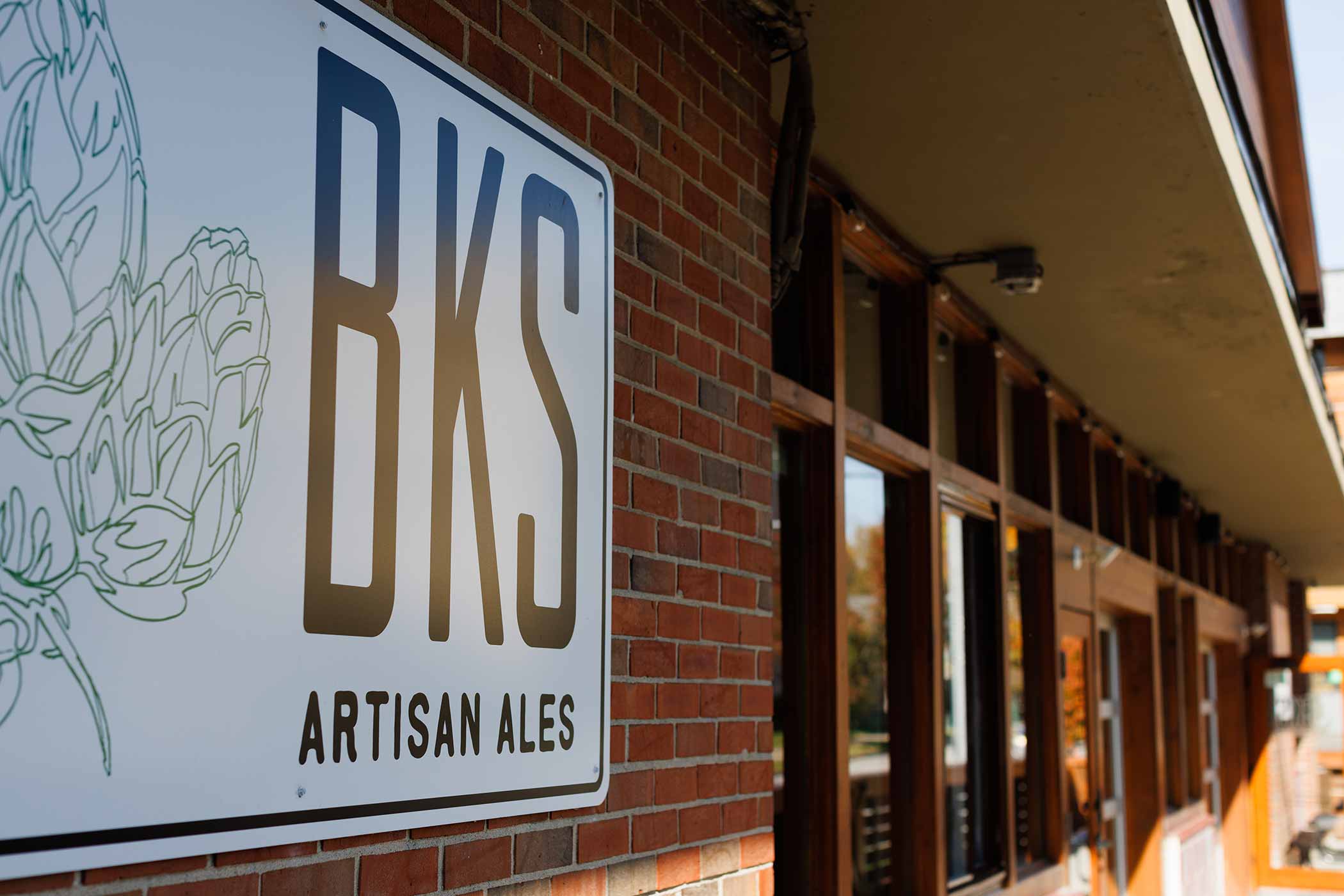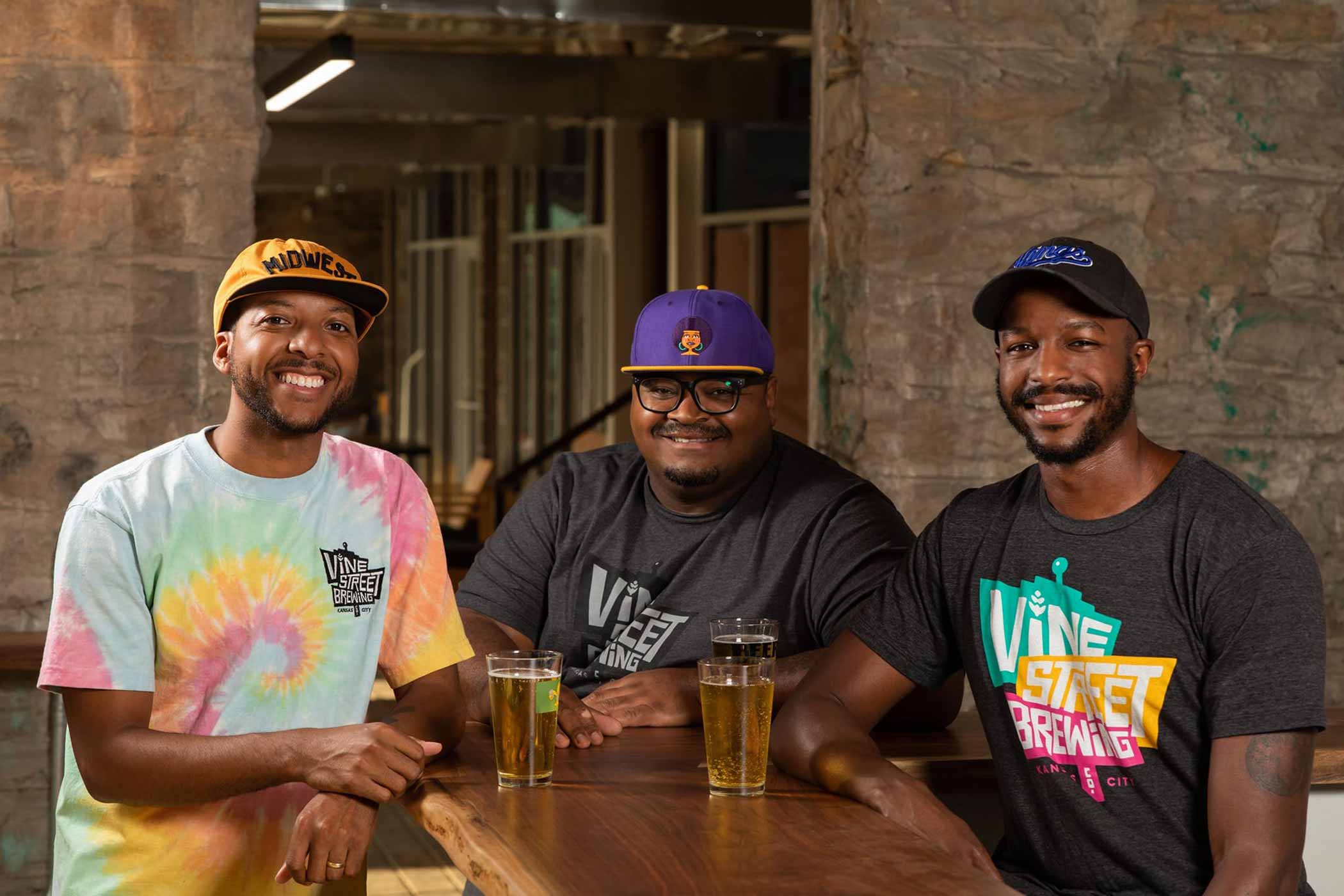Shop
BKS Artisan Ales: At the Corner of Crispy and Hoppy
Looking for More?
For some, inspiration comes from the back of a napkin. Still, others find lightning striking in a bottle. For BKS Artisan Ales Co-Founders Brian and Mary Rooney, the light bulb lit up during a road trip.
For several years, Brian kept talking about opening a brewery. On a five-hour car trip back from visiting friends in Oklahoma, Mary had enough.
In all fairness, Brian’s homebrewing obsession started when Mary bought him a Mr. Beer Kit.
“I made terrible beer!” he laughs. “But I got a lot better after that.”
“A lot better” is a little bit of an understatement. The insurance worker went down the rabbit hole, entering homebrewing competitions with the dreams of one day starting his own place. “That was the first time I thought, well, maybe I’m good at this,” he says. But Brian felt he lacked professional experience, so he transformed a portion of his basement into a one-barrel brewing system. He spent two-and-a-half years brewing down there while fine-tuning his process.
“[Brian] likes to dream a lot,” Mary chimes in. “If you’re actually going to keep talking about this, let’s put it to paper.”
Which is precisely what she forced Brian to do during that car ride.
Good thing for all of us, too. Today, BKS Artisan Ales has won multiple major awards and even started a second all-lager brand called Pivo Project. The brewery has come a long way from a piece of paper in a car and a one-barrel brewing system in a basement.
From Basements and One-Barrels to BKS Artisan Ales
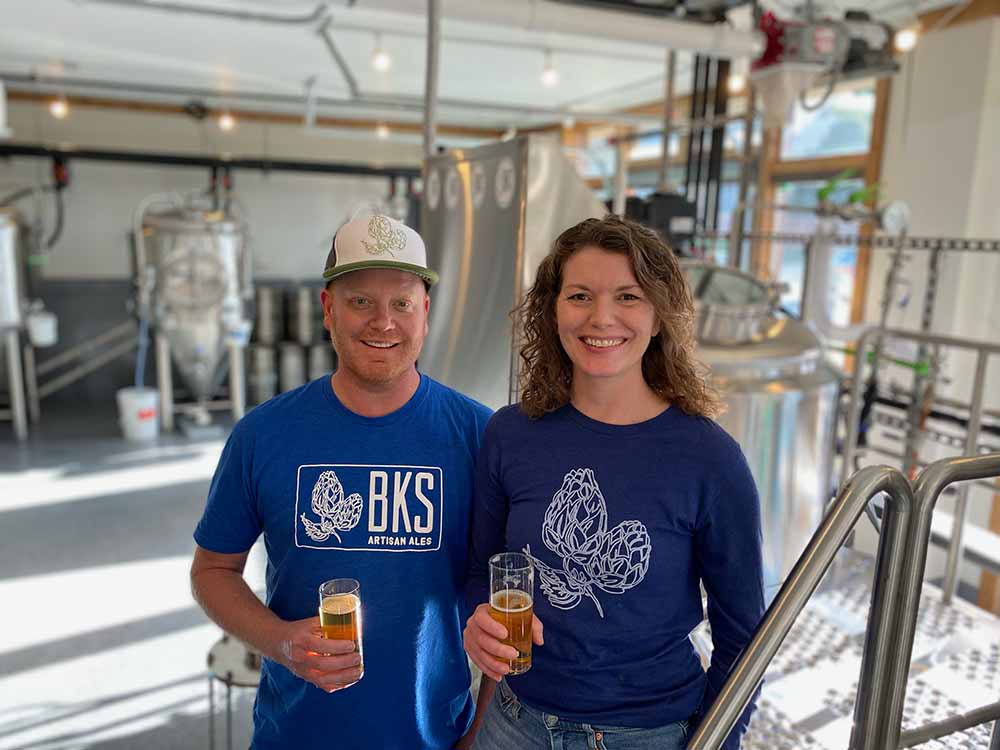
Photography courtesy of BKS Artisan Ales
When Brian got home from that drive, everything changed.
“Every morning before he went to work and every evening, he sat on his computer at home working on the business plan,” says Mary. “I don’t know how many months that was.”
“Many months,” Brian interjects with a smile.
By the fall, Brian had finalized the business plan, but it took him two years to find the right spot. Eventually, the Rooneys signed the lease on an old building from the Barkley Evergreen advertising firm in the Brookside neighborhood of Kansas City.
“We live nine blocks away. … But I never knew what the building was,” says Brian, noting the place sat vacant for fifteen years after its last tenant (which perhaps paradoxically was an alcohol rehab center. “I swear to God!” Brian told me).
For locals like Brian and Mary, opening BKS (an acronym for Brookside) in their own community was essential but also very strategic.
“We wanted to stay in the neighborhood because we know everybody from around here,” says Brian. “Imagine a heat map for Kansas City [showing] the highest concentrations of craft beer [buyers] and drinkers, and it’s red hot right through this area, so I was like, well, this is my spot.”
When Plans Change Even Before You’re Open
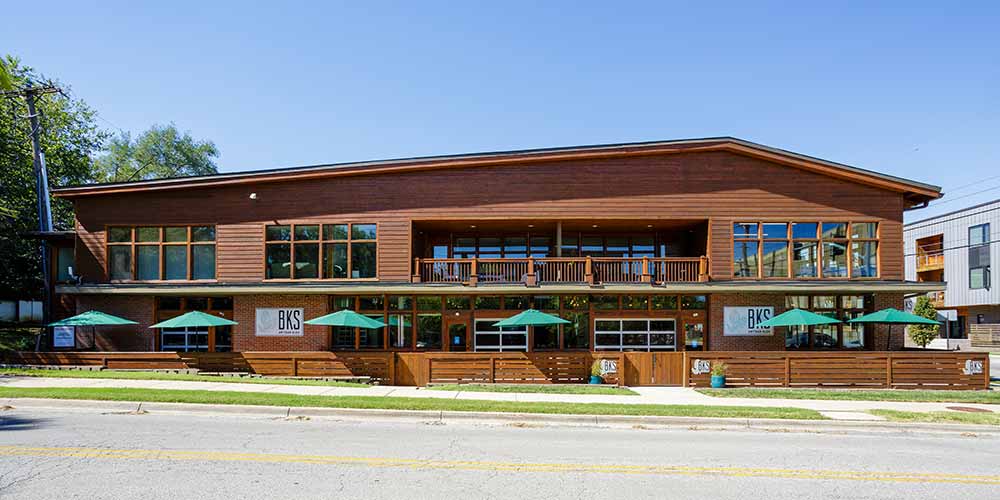
Photography courtesy of BKS Artisan Ales
Looking back, Brian asks, “Why was anybody really interested in what a homebrewer would do in Kansas City?”
At the time, Boulevard bottles (yes, bottles, and that’s important) dominated the beer market in this Midwestern city.
But Brian made an intelligent decision before the brewery even opened.
“I would just give cans to some of my friends,” he says. “And they would give them to other people.” And other people. And other people.
“I was just homebrewing, putting it in cans, and giving them away for free,” he laughs. “It got around town, and I think people thought it was really good.”
This pipedream of running a two-person brewery? Well, that turned unsustainable pretty quickly.
Word had gotten out.
People loved BKS, and the Rooneys couldn’t keep up with the demand, which often meant lines out the door for the four hours they opened every Saturday.
Within two months, both left their full-time jobs, dedicating all their time to BKS.
And not just to the beer but to the people and the brand.
At BKS Artisan Ales, the Right People Make the Right Beer
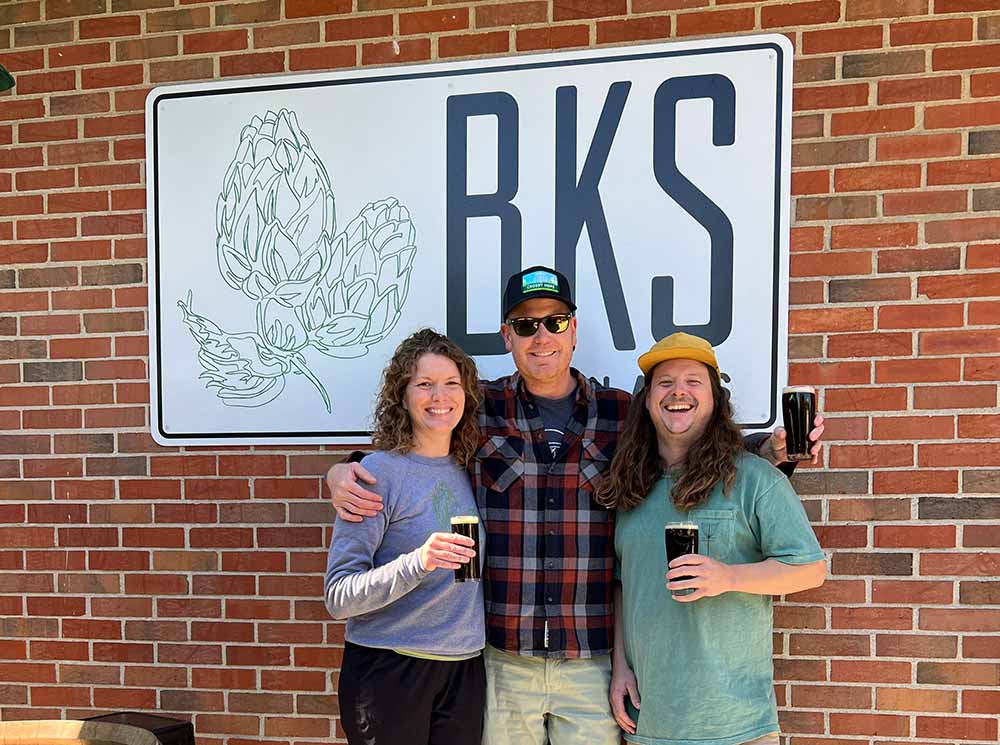
Photography courtesy of BKS Artisan Ales
When Mary and Brian describe BKS, words like community, family, and neighborhood come up often.
Brian speaks about his three-person brewing team in the back of the house almost like they’re his own children.
“When we talk about growth and building the business, it’s not worth it unless you have the right people with you first,” says Brian, who prides himself on the fact that every member of his brewing team asked to work there. “Each time we brought one of those people on board, I told them, no pressure, but we’re going to grow the business because of you, because I believe in you, and because I know you can make us better.”
When I ask Mary to describe BKS, she talks about the people first. How you’ll find a whole range of folks in the taproom from the neighborhood regulars to the hardcore craft beer fans.
“We’re friendly but knowledgeable and very welcoming,” she says. “Every time you come in, there will be a new experience … with friends, family, kids, dogs, whatever. Just come and hang out with us!”
Perhaps not coincidentally, as the people came, BKS grew. What started as a brewhouse with a three-barrel brewing system and three three-barrel fermentors turned into a seven-barrel brewhouse with nineteen fermentors that vary in size, holding anywhere from five to ten barrels.
Pretty fitting for a brewery that started as just a business plan in a car and a Mr. Beer Kit-turned-one-barrel system in a basement.
As Brian said, he got a lot better after that.
The Award-Winning Ales Are Pretty Good
For a brewery that puts “Artisan Ales” in its title, you’re expecting phenomenal ales.
BKS’ popular DNEIPA Clouds impresses, beating out 194 other beers to nab silver at the 2021 Great American Beer Festival (GABF) in the Juicy or Hazy Imperial Pale Ale category.
But Brian points out the ale he’s most proud of, Counterculture, as the “hazy IPA that we’ve made more than anything,” he says.
Counterculture
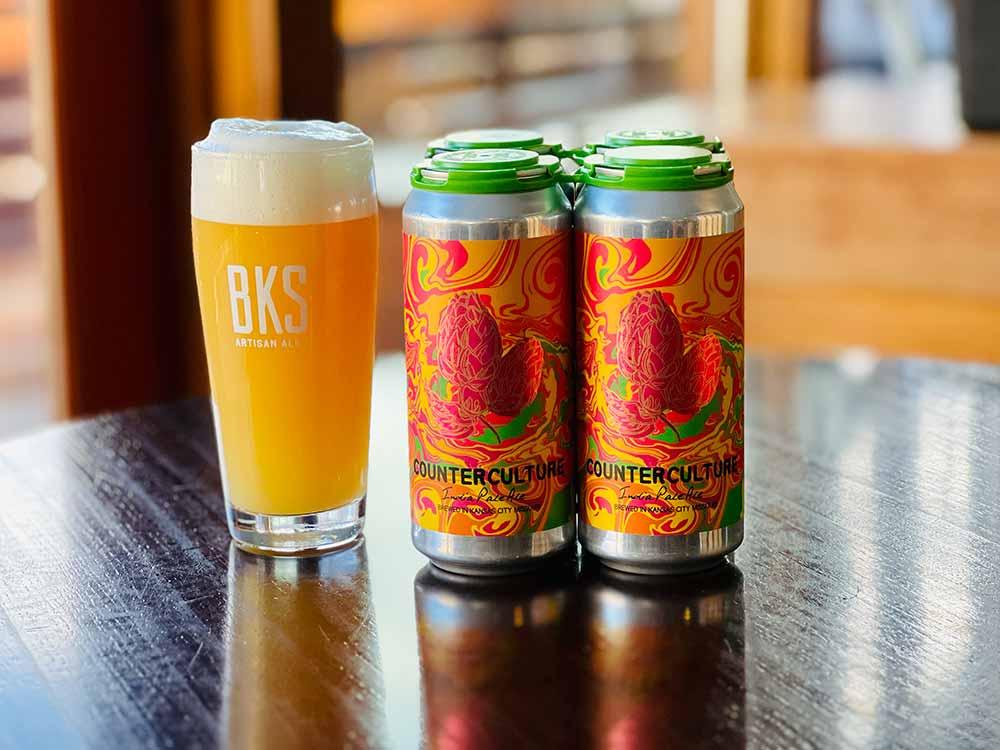
Photography courtesy of BKS Artisan Ales
One of the beers from the early days, the second to be exact, Counterculture “captured people’s attention around town and is still a big seller for us,” says Brian, admitting they’ve tinkered with the recipe a lot over the years.
Today, Brian uses a different yeast profile and malt bill—now a blend of pilsner malt, a little bit of Maris Otter, wheat, flaked wheat, and flaked oats.
But has stayed consistent with Columbus in the boil. According to Brian, the hop’s high oil content helps bind with the proteins from all the malts. “That’s where we capture haze formation,” he says. “Not from yeast. Ours comes from the interaction of proteins and the oil content of specific hops.”
He also perfected a dry hop of 4.25 to 4.5 pounds per barrel with Citra, Mosaic, and Simcoe Hops. “Then we started adding Galaxy in late 2019,” says Brian, who found inspiration for Counterculture after a trip to Vermont in the early 2010s.
Meant to be a beer that bucked the convention of what people thought about a hoppy beer at the time, Counterculture today dominates. “We have maybe thirty accounts [around town],” says Brian. “A lot of them just want Counterculture.”
And Thrillist even named this beer to its list of the 38 Best IPAs in America Right Now in 2022.
But when Brian put ”Ales” in the name, he didn’t just mean the hoppy stuff.
Rockhill & Locust
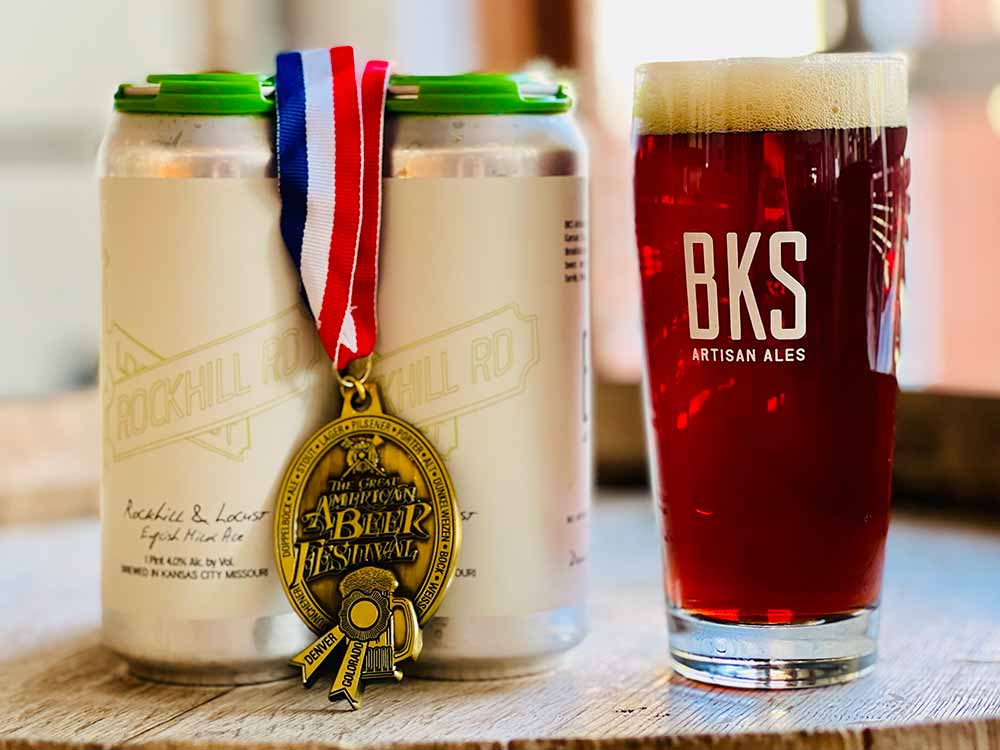
Photography courtesy of BKS Artisan Ales
Yes, you read that right…an English mild.
Named after a local street corner, Rockhill & Locust was “the beer I brewed most as a homebrewer,” shares Brian.
Brewing the English mild taught him more about malt. “Tasting English milds from other producers, there was always this complex layer of character wrapped in this drinkable 3.5% to 4% ABV package,” he says. “I thought there’s got to just be all these layers of malts I can play around with. … So I can’t tell you how many different interpretations I made over the years as a homebrewer.”
Professionally, Rockhill & Locust starts with Maris Otter “because I think all great English beers need to have that,” says Brian. What follows is a blend of six malts, such as crystal malts for notes of caramel, dark fruit, and coffee. And a couple of other character malts “that I like to bring in some of the toasty biscuity and chocolate notes,” says Brian. “But the chocolate needs to be so subtle, you can’t let that lead or be out front.”
Hopwise, only East Kent Golding will do. “That’s the only hop we use,” says Brian. “At the very beginning, I do a little first hop edition and then a little bittering edition, just a kiss.”
Even the yeast went through extensive testing. “I’ve tried so many different ones,” laughs Brian. “And, of course, the one we use is the most God-awful yeast you could ever work with to get the beer clear.”
Brian says it’s basically a finicky Boddington yeast strain that he finds gives the beer a body that no other English yeast can. “It drinks full but also finished very clean, and you want another one,” he says, thanking his lucky stars he doesn’t need to use that strain in any more of his beers. “I can’t stress enough that I discourage anybody from using it, but it does make a good end product.”
So good that we named this English mild to our list of “The Best Beers We Drank in 2023.”
The dark mild pours a chestnut brown, almost ruby garnet if you hold the beer to the light. A gem indeed, this English dark mild ale washes over our taste buds with notes of charred graham cracker, toasted bread, and a touch of cappuccino. Probably thanks to the handfuls of English pale malts and the unique blend of specialty malts.
With just a light smack of floralness at the end from the English East Kent Golding hops, Rockhill & Locust evokes this style effortlessly.
A testament supported by its gold medal in the “English Mild or Bitter” category at the 2022 GABF.
But when Brian put “Ales” in the name, he didn’t just mean ales. Well, he did at the time, but that’s neither here nor there now that BKS is making award-winning lagers, too.
And the Award-Winning Lagers Are Pretty Good, Too
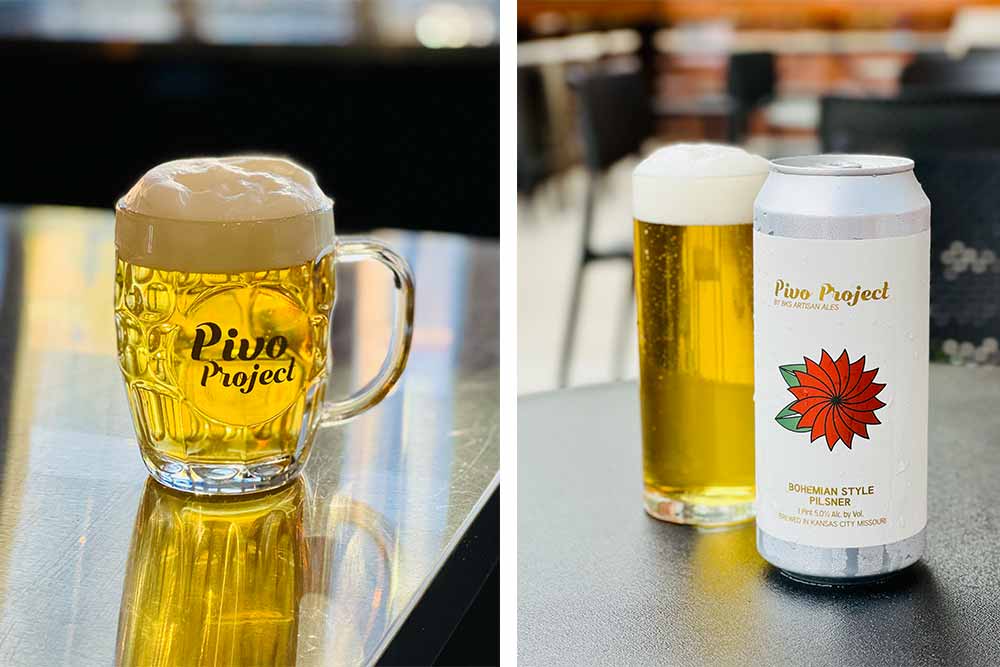
Photography courtesy of BKS Artisan Ales
A fan of lagers, Brian decided he wanted to activate different parts of his brewing brain.
But he admits that making a lager made him uncomfortable at first. “We called ourselves BKS Artisan Ales, so I felt weird making lager.”
Eventually, Brian thought, “What if we had a brand inside of a brand?”
Named after the Rooneys’ dog and inspired by Firestone Walker’s Pivo Pils, Pivo Project represents the lager side of BKS.
“My love of Pivo Pils came first, then the dog, then the brewery,” jokes Brian.
The brand has a distinctly European Bohemian art-folk feel by design to “capture everybody’s imagination a little bit better around the idea of lager,” says Brian. “Make you stop and pay attention to where the style comes from.”
Bohemian Style Pilsner
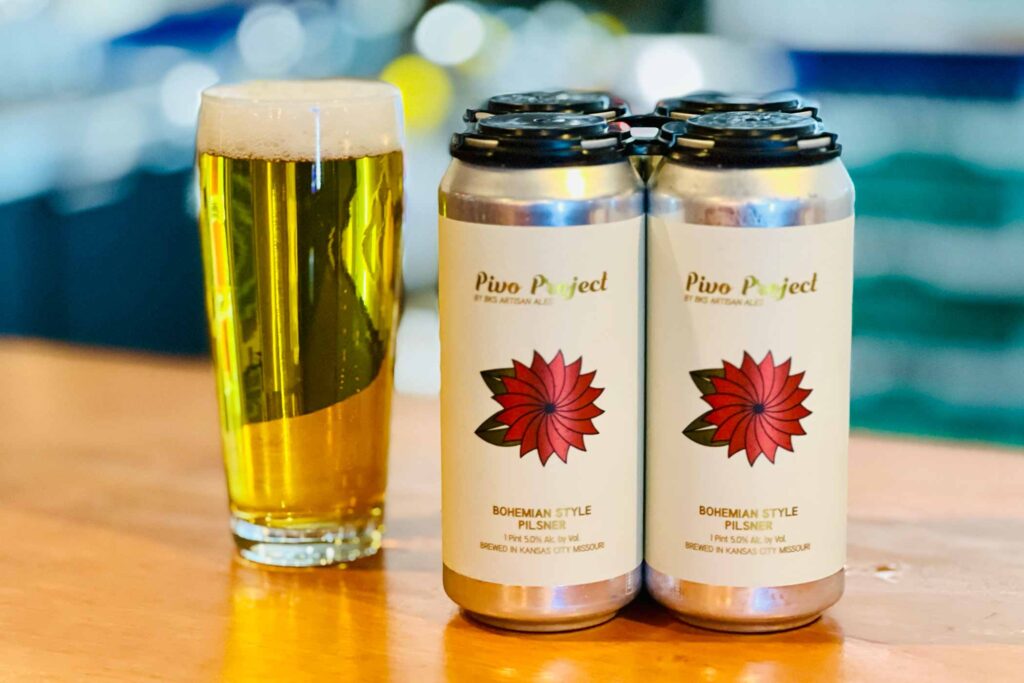
Photography courtesy of BKS Artisan Ales
And when we say tinker…we mean tinker. Water, malts, mash temperatures, and hopping process—all variables Brian played with and tested. All while using a brewing system set up for ales and with small lager fermenters.
Accordingly, Brian says they’ve needed to get creative. For example, Brian doesn’t have the equipment for step mashing or decoction, the traditional Czech technique of removing part of the mash, boiling it, and putting it back in. Instead, he says they spent much time looking at water chemistry.
“We have a soft water profile that captures the right calcium and sulfate levels and delivers the right pH levels that we think are extremely important for making that style of beer because it’s so delicate,” says Brian.
Malts come next. Although he started with Weyermann Bohemian Pils pilsner malt, Brian says he didn’t like the final flavor. “It was almost too earthy, almost like a husky-type character,” he says.
Today, BKS uses only Weyermann Pilsner malt and a touch of floor-malted Bohemian Pils “to capture what we think is the essence of a Czech-style pils,” says Brian, who also adds some acidulated malt to control the pH on the mash and a bit of Carafoam. “The reason I do that is you want this perception with the Czech pils of it being dry but also full, which is like complete opposites that argue with each other, but you know it when you have it,” says Brian. “It has to beg for another sip, so it has to have some dry character to it, but you still have to have some body to it as well.”
Brian says the other key is mash temperature. “We don’t go in at an extreme temperature, but we’re also not extremely high,” he says. “A balanced approach helps us achieve the body we want and the head retention we’re looking for in the beer.”
For hops, Brian classically uses all Czech Saaz along with a technique called first wort hopping, where he adds hops as soon as he’s lautering and running mash over to the boil kettle. “As soon as it starts to come in, we just throw the hop pellets in there,” he says. “We get this spicy, herbal, nice, clean Czech-hop character … and we find that it does not cause excessive levels of bitterness. … It’s remarkable how much hop character you get out of it and how soft the bitterness is.”
Brian then starts the fermentation for Bohemian Style Pilsner a couple of degrees lower than normal to “get a nice, smoother, slower start to it, rather than an eruptive fermentation,” he says. “If you let the yeast know what you’re going to do upfront … it’s willing to work harder at a lower temperature for you.”
Last but not least, Brian does spunding, capturing the natural carbonation for the beer before polishing it up in the brite tank.
With Pivo Project, Brian and his team poked and prodded every step of Bohemian Style Pilsner. And it shows.
Craft Beer & Brewing named the Czech-style pilsner to its list of “The Best 20 Beers in 2023,” and we named it one of our favorite beers of spring 2023.
From Ales to Lagers and Beyond
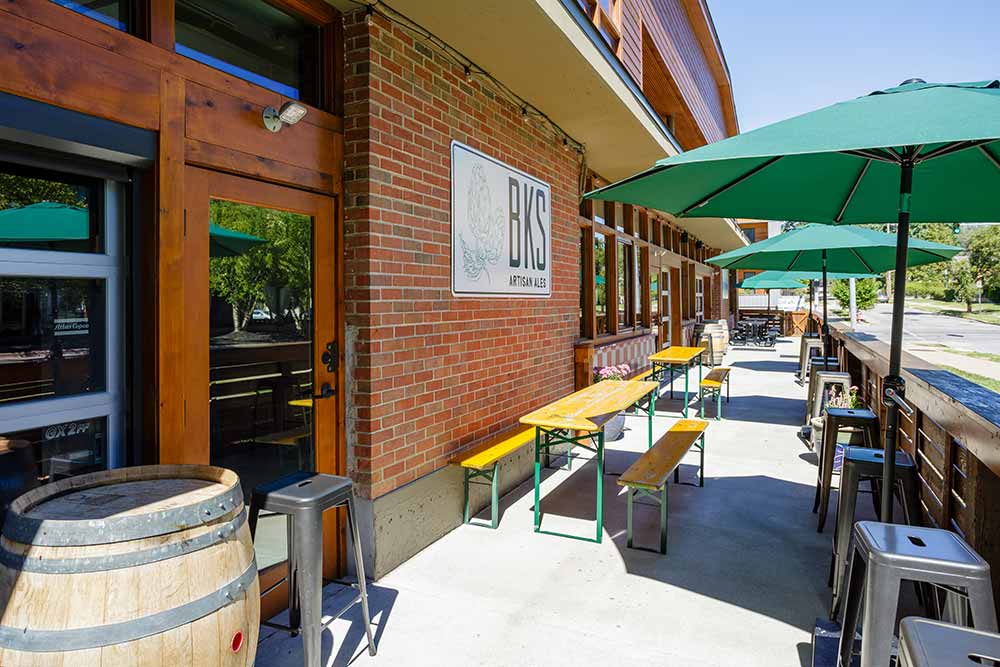
Photography courtesy of Chris Mullins | BKS Artisan Ales
For the future, Brian says he’s excited to dial in more of the brewery’s West Coast interpretations—West Coast pale ale and West Coast IPA. “I love that our customers want more of it,” he says.
He also hopes to dive deeper into more English styles with plans for a total English beer-style takeover of their taps in mid-February.
And some darker lager interpretations as well. “I’m getting pressure to do a Baltic porter,” he mentions.
Besides that, after the brewery’s most recent renovations and growth, Brian says he’s looking forward to taking it easy for a while.
Well, with the caveat that he hopes to one day open up a brick-and-mortar dedicated solely to Pivo Project.
“That’s just a dream,” Brian says in almost a whisper. “You got to stop me from saying those things.”
Because that’s when Mary would step in with a pen and paper (or more likely a computer) and say let’s write a business plan.

